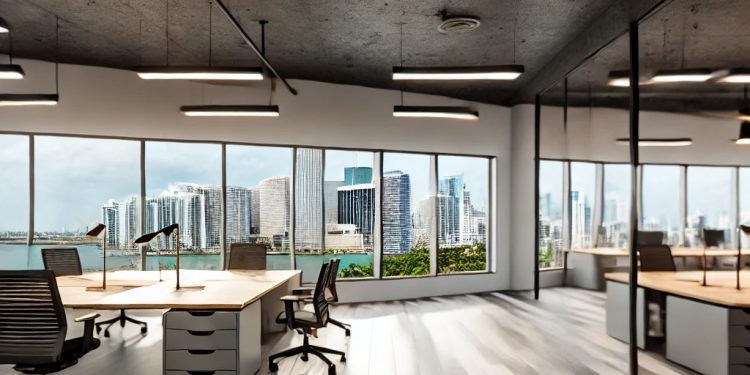In a bustling city like Miami, the bar for quality standards in commercial spaces is high. From eco-conscious materials to tech-driven convenience, today’s business landscape demands environments that reflect both innovation and responsibility. As a Miami business owner, upgrading your commercial space not only enhances your brand’s image but also aligns with consumer expectations and city regulations. This guide walks through essential updates to help you meet these standards.
1. Invest in Energy-Efficient Lighting
Energy efficiency is no longer just an option—it’s a priority for modern businesses, especially in sun-soaked Miami. Upgrading to LED lighting or even integrating smart lighting systems can reduce operational costs while creating a welcoming atmosphere for customers and employees alike. Energy-efficient lighting can be automated to adjust brightness based on time of day or occupancy, further saving energy and contributing to Miami’s environmental goals.
In addition to operational savings, energy-efficient lighting can improve customer experience. Bright, well-lit spaces tend to feel more inviting, creating a positive impression of your brand. To ensure these lighting upgrades meet local quality standards, consult a licensed electrician familiar with Miami’s energy codes.
2. Enhance Restroom Facilities with High-Quality Partitions
Restrooms are often overlooked in commercial renovations, yet they play a critical role in the overall customer experience. If you wish to improve the space’s appearance and ensure durability in high-traffic areas, you have to order commercial bathroom partitions in Miami. Miami’s humid climate can be hard on certain materials, so investing in partitions made from moisture-resistant materials will keep them looking pristine longer.
Opt for partitions that provide both privacy and style, complementing the aesthetic of the rest of your business space. Quality restroom facilities leave a lasting impression and can even influence customer retention in service-oriented businesses. Additionally, ensure that your restrooms meet ADA compliance for accessibility, as this is part of meeting quality standards across the board.
3. Integrate Smart Technology for Convenience and Efficiency
Incorporating technology into your commercial space is crucial for both employee productivity and customer convenience. Miami’s competitive market means businesses need to offer modern amenities to stand out. Consider installing Wi-Fi-enabled systems for temperature control, digital check-ins, or even customer-facing kiosks for streamlined service.
Smart technology doesn’t just appeal to a tech-savvy clientele; it also provides data that can help you optimize your operations. For example, occupancy sensors can help adjust HVAC systems to save on cooling costs during non-peak hours. When considering technology upgrades, choose systems that can be easily maintained and updated to avoid frequent replacements.
4. Use Sustainable and Durable Materials
Sustainability is increasingly significant to consumers, and it can be an effective way to set your business apart. Consider eco-friendly materials, like reclaimed wood or recycled metal, that also stand up to Miami’s humid climate. These materials often require less maintenance over time and offer an aesthetic appeal that aligns with contemporary design trends.
Using sustainable materials can also help you attract environmentally conscious customers, who may be more likely to support businesses aligned with their values. If you’re unsure where to source sustainable materials, organizations like the U.S. Green Building Council provide resources on sustainable building practices and can guide you in selecting materials that qualify for LEED certification.
5. Optimize Layout for Productivity and Customer Flow
An effective layout makes a commercial space feel open and welcoming while guiding customers naturally through the area. For retail spaces, ensure high-demand items are accessible, while service-based businesses should focus on creating intuitive pathways for customers. An optimized layout also impacts employee productivity, as clutter-free, organized workspaces reduce distractions and improve focus.
To determine the best layout, consider how customers typically navigate your space and what adjustments could make their experience smoother. Additionally, allowing for flexibility in your layout enables you to adapt to seasonal demands or new service offerings without major renovations. This adaptability keeps your space relevant and functional as your business evolves.
6. Meet Local Building Codes and Regulations
Renovations aren’t just about aesthetics; they must also comply with Miami’s building codes and regulations. Miami’s unique climate conditions, including high humidity and hurricane risks, mean businesses need to meet stringent safety and durability standards. Work with a licensed contractor who understands these local requirements to ensure that your updates are up to code and built to withstand Miami’s environmental challenges.
Failing to meet local codes can result in fines or costly modifications after the fact. Therefore, it’s essential to incorporate these standards into your planning process to avoid unnecessary complications down the line.
Final Thoughts
Updating your commercial space to meet Miami’s quality standards is an investment in your business’s future. From energy-efficient lighting to high-quality restroom partitions and sustainable materials, every upgrade contributes to a more functional, appealing, and compliant space. By aligning with modern quality expectations, you not only enhance the customer experience but also ensure that your business can thrive in Miami’s competitive market.
For more insights on sustainable commercial building practices, check out resources like the U.S. Green Building Council, which provides guidance on sustainable materials and LEED certifications. Taking these steps will ensure that your space is built for today’s needs and ready for tomorrow’s challenges.


















